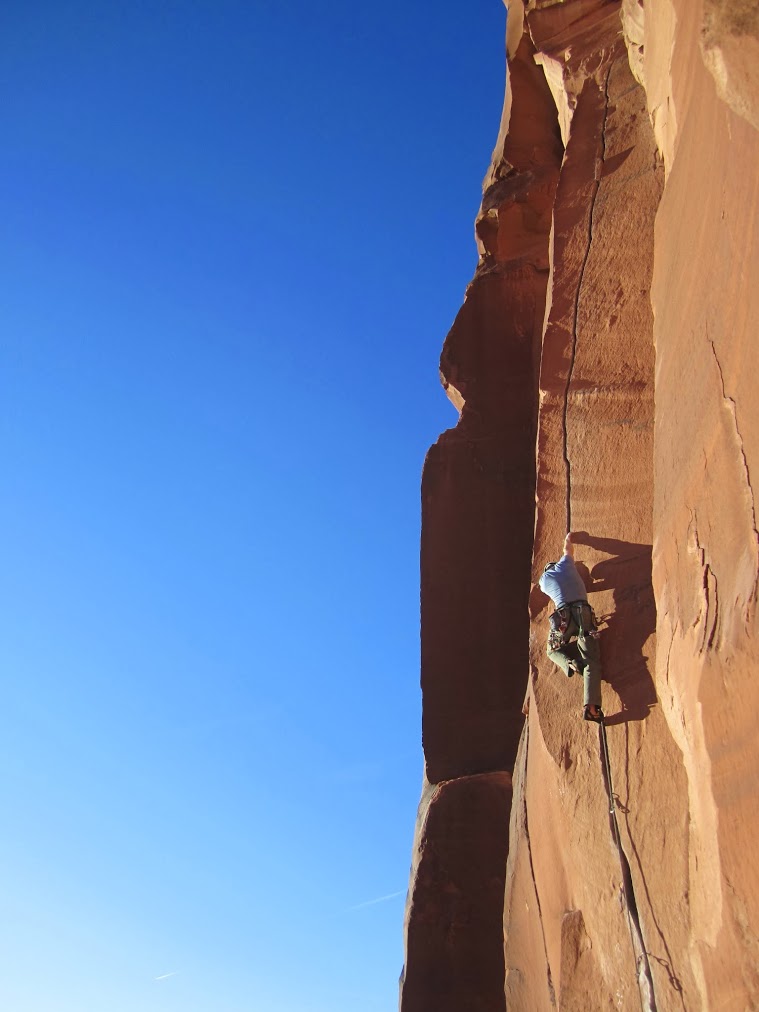Placing the Supercam
The Supercam sports a long axel and broad cam lobes. This is ideal for parallel placements, but can be a real thorn if you’re faced with awkward or finicky placement options. When you do find a good spot for the Supercam, the tight cam angle and large surface area of the lobes makes the cam really bite. Granted, all cams will hold falls when used correctly, but for what it’s worth, when it’s set right, the Supercam feels absolutely bomber.
The unfortunate flip side of this coin is that it is unusually hard to find a perfect placement with the Supercam. It’s wide head stakes out a large amount of space inside a crack, making it harder to work around crystals or irregularities. This is much more noticeable than, say, the difference in cam angle between the Supercam and a #2 C4: the Supercam is definitely less forgiving of wonky placements and is harder to wiggle out of a really tight fit. This cam rules for climbing in the desert, long granite cracks, or anywhere else where splitters abound. But if you’re climbing where the placements sometimes take more thought, Looking Glass in NC and Eldorado Canyon in CO come to mind, the Supercam probably isn’t the right cam for you. It’s simply not versatile enough.

One other odd consequence of the Supercam’s asymmetry is that it can’t be pushed into a placement well. Outside of walking a battle-axe sized cam up an off-width, pushing cams (either into an out of reach placement or just to improve a placement) is probably not something most climbers make a habit of, but I’ve done it before, and I’m sure I’ll do it again. The Supercam isn’t a great candidate for this sort of shenanigans: the larger lobes, by their nature, see more torque and will turn much farther than the smaller lobes, even to the point of overcamming. This is only a minor criticism though, as pushing your cams around is not a great habit to adopt in the first place. That said, consider yourself warned.
The Supercam also has broad and flat ribbon springs, rather than wire springs. This doesn’t particularly change the experience with the cam much, but I feel obligated to note that they didn’t gum up much over time. They’re stiff, to be sure, but they didn’t grow to lose their snap or become sticky.
Bottom Line
The Supercam suites climbers of a certain bent. If you like the smaller Metolius cam angle, then you won’t lose too much range in opting for the Supercam vs. the competition in the hand-to-small-off width sizes. Likewise, if you climb splitters (especially in the desert where the rock is soft) having the Supercam’s broad head with a lot of surface area on the rock is awesome. At Indian Creek, for example, a comparably sized C4 or Dragon doesn’t really have much to hold compared to the the Supercam.
On the other hand, if you’re all over the map with your climbing and looking for a set of very versatile cams, then you’ll be better off with something slimmer like the C4s, Helium Friends, or DMM Dragons.
